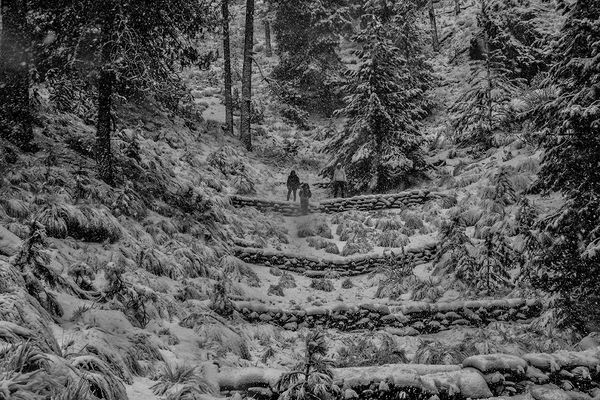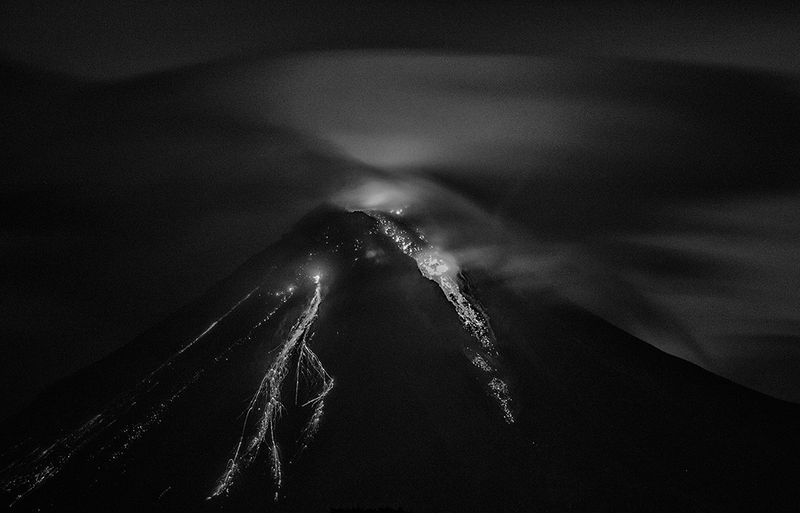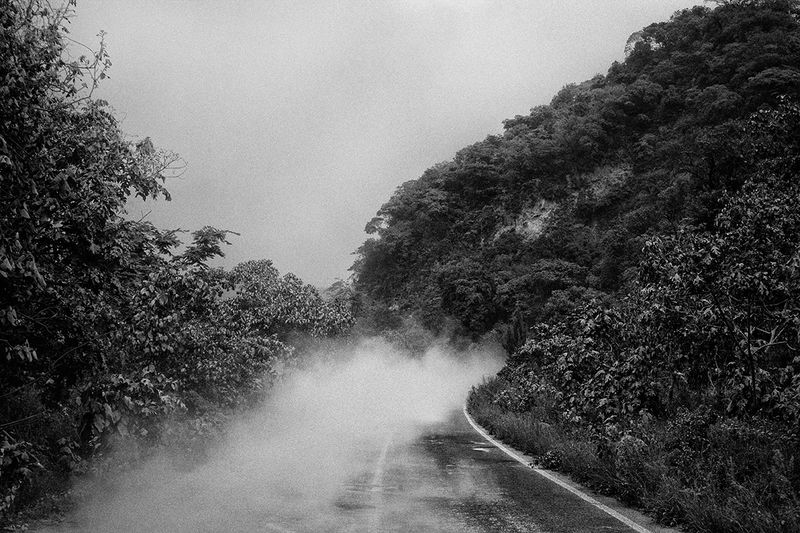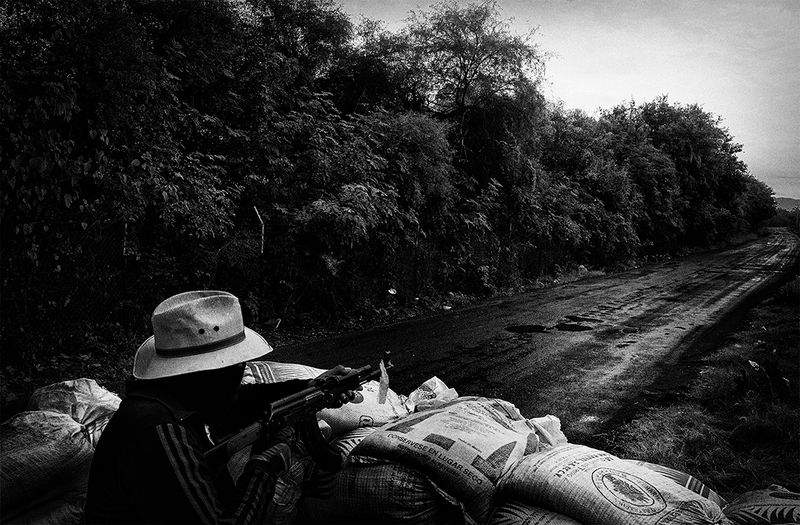Understanding Mexico Through its Volcanoes
-
Published1 Nov 2017
-
Author
Since 2015, Hector Guerrero has been photographing along the route of Mexico’s seven tallest volcanoes, delving beyond traditional representations and focusing instead on the social aspect tied to these sublime landscapes.
Since 2015, Hector Guerrero has been photographing along the route of Mexico’s seven tallest volcanoes, delving beyond traditional representations and focusing instead on the social aspect tied to these sublime landscapes.
Hector Guerrero began photographing Mexico’s seven tallest volcanoes in 2015. The volcanoes revealed before him an alternative vision of his homeland, showing the full range of weather conditions, environmental pressures, and social forces that compel people to either flee to the United States or establish settlements in the foothills that could one day displace them.
Walking on the Smoke Route is a documentation that contrasts Mexico’s contemporary issues in a new light. Guerrero’s images remind us about the power of nature and the importance of preserving the remotest corners of a nation.
Across your series, Walking on the Smoke Route, I find a horizontal sensibility between the environment and the people. Was this a conscious act?
Yes, one of my first thoughts when I started to structure the project was that I wanted to connect the natural physicality within the human element, and so, I am always seeking to work in close proximity to people, even though the main foundation of my work is landscape. For example, many of my photographs do not have a human presence, yet I do look to include people in other frames across my narrative.
I feel that you have photographed the landscapes with a very embellished approach. Did you intend to challenge the visual expectations people tend to find over such regions and issues that link to the location?
The basis of my work is always nature. For instance, with this project, I look to show that Mexico has these natural landscapes, completely forgotten, but always coexisting with society, however undervalued they may be. I don’t look to portray ‘beautiful’ landscapes, I only hope to find the essence of the place, but these places are truly gorgeous and powerful, so while trying to capture that essence, you end up capturing beautiful images.
How did you come to photograph volcanoes?
A few years back when I had started to take photographs, I was working for a small local paper in my city. One day my editor walked in and told me that the Colima volcano was showing signs of unusual activity, so he suggested I should go and take some photos around the area. Later, I drove to the location, and once there I was the only photojournalist in the vicinity. Consequently, my photographs were published in numerous papers across the country.
From this initial experience, the volcanoes captivated me. I had never been in the presence of a volcano in my life. I was truly mesmerised to be there in full darkness, and witness how all of a sudden it could light up because of the red lava in the middle of the night. Since then, I have been photographing the Colima volcano, yet never as a project: more in single frames. I wasn’t sure how to focus the project because when photographing volcanoes you tend to be labelled as a 'wildlife' or 'nature' photographer, almost as a ‘travel photographer’, and that wasn’t my style. On the contrary, I wanted to make something more personal and touching, focusing more on my personal interests around this theme.
Moreover, I decided to create the narrative using a ‘road trip movie’ sort of style. I stopped using colour and focused on working in black and white, which allowed me to capture the main objectives of my story. I had to drop the idea of showing the beautiful natural colours from the region, from sunrises and gorgeous daytime light, in order to see my main characters.
The photographs of the volcanoes, the smoke, and the lava have been captured in a rather monumental way. Were you looking to defend the natural beauty that perhaps is overlooked in them?
Totally. In fact, this is one of the main focus points of my project. I want to show the importance and power of nature, which is forever coexisting with the surroundings whether isolated or not. For instance, what’s happening around those volcanoes? I seek answers to that question. Yet, I do focus on the grandeur and beauty of the natural environment since it is important to communicate the relevance of conservation. Sadly in Mexico, people are not reminded about the significance of preserving our natural heritage. For example, most people ignore the effect that volcanoes have on the sub-soil and the soil where they sit.
You seem to have been able to portray many of the contemporary social issues that exist in your home country, namely migration, and narco confrontations as well as environmental degradation. Did you have this in mind when you embarked on the project?
As I said previously, part of what I want to show is the regions around the volcanoes: the routes in Mexico have become very dangerous, and I want this issue to be represented here. I want to show these realities in Mexico: the contrast of the imposing landscapes and the violence that surrounds them, not only the arms and drugs violence, but also the environmental impact, which is fundamental and often overlooked.
How has the project been perceived in Mexico? What have been the responses in relation to using the volcanoes as a symbol of natural and social concerns?
I haven’t shown the project in Mexico yet. I would like to continue photographing the topic for a few more years, especially in few communities in the south of Puebla, where the environmental risks are neglected. The Iztaccíhuatl is the last glacier alive in Mexico: about 50% is left and its extinction is inevitable. A few people know that Mexico used to have 5 glaciers; today we only have half of one. This is definitely something that I'm looking to continue documenting…To finish with, I only want to continue photographing, and later, I will see what I can do to spread the project across the country and hopefully create awareness.
-------------
Héctor Guerrero is a Mexican photographer focusing on contemporary issues in his home country. Follow him on Twitter and Instagram.
Verónica Sanchis Bencomo is a Venezuelan photographer and curator based in Hong Kong. In 2014, she founded Foto Féminas, a platform that promotes the work of female Latin American and Caribbean photographers. Follow her on Twitter.






